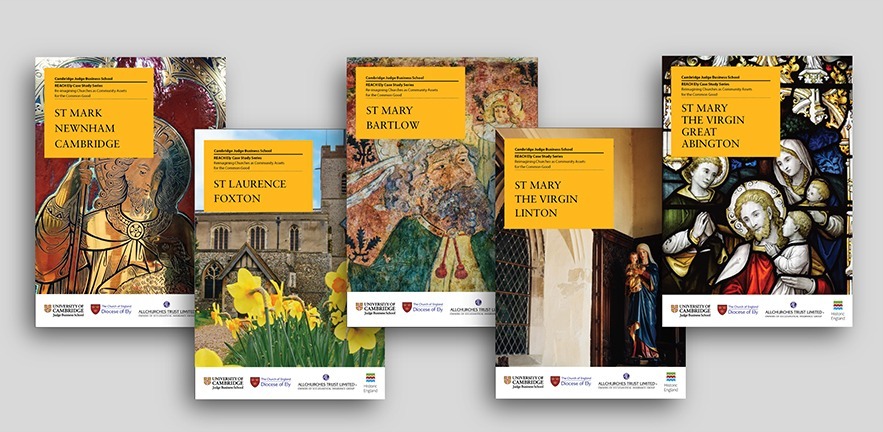The REACH Ely project has produced the first batch of case studies.

Colourfully illustrated case studies cover urban (Newnham in Cambridge) and rural parishes (Foxton, Linton, Bartlow, and the Abingtons) of the Diocese of Ely, each offering themselves for the study. Case materials have been written based on research observations, desk-based research of community level data, and personal in-depth interviews with the clergy, parish churchwardens, and members of parochial church councils.
The key focus of the case study exercise is the capacity of churches in reaching out towards their diverse communities. Church buildings of the Church of England, while respecting their age, location and historic significance, are essentially community assets. In the Church of England, buildings are owned by the Church and managed for community benefit by local groups of volunteers. Although church buildings are primarily used for religious services, for the benefit of the community it is essential that churches become real tools for mission, provide complementary uses of the building, and welcome the wider community on any day of the week rather than being exclusive sites for Sunday worship.
Case studies offer a snapshot in time of the more or less innovative uses of church buildings. The publications are designed around the following themes: church buildings and their local community, fundraising and income generating activities, community events, communication and engagement, and challenges and lessons learned. The project team accepts that there are some limitations to the case study method in conducting the research on a large scale because of the in-depth nature of the data and individual insights. Yet the cases provide a general evidence base of a change in the way church buildings are being used, reviving the wider civic and community roles churches had in earlier centuries. At present, as the findings illustrate, there is an understanding that churches need to change, both their buildings and their approach to community engagement, in order to meet community needs. An essential step towards this can be the installation of kitchen and facilities, however, as the cases illustrate, this effort does not on its own guarantee success. The physicality of the building with improved heating, lighting, wheelchair-friendly access, and the welcoming appeal are also some of the ingredients of success. The cases demonstrate creative fundraising ways to realise community engagement plans, a variety of complementary uses of church buildings, and the crucial lessons learned by churches – to be able to listen to and be constantly present in their communities.
The research team of REACH Ely encourages the reader to ask whether churches have been able to engage with the population that do not attend parish churches – in the Diocese of Ely, these comprise about 97.7 per cent of the population (by weekly attendance figures) – and how they have achieved or attempted to do that. Some churches and communities are effective at reaching out to ‘the 97.7 per cent’, and their experiences and learned lessons can be illustrative and inspiring examples for other parishes. Still many churches and communities are in search for optimal and effective community engagement opportunities.
The REACH Ely team is thankful to all respondents who enthusiastically participated in case studies and shared their insightful and inspiring experiences.
Unless otherwise stated, the views expressed in the case studies are those of the participants. The second batch of case studies is currently under review and to be published in August. In total, the REACH Ely project will produce 35 individual case materials comprising all deaneries in the Diocese (the Cambridge North and South, Granta, Ely, Yaxley, St Ives, St Neots, Shingay, North Stowe, March, Huntingdon, Fincham and Feltwell, and Wisbech Lynn Marshland) and depicting multitudes of successful or struggling ways of serving local and wider communities.
Text, design, photography
Dr Timur Alexandrov, Research Associate, Centre for Social Innovation at Cambridge Judge Business School.
Editorial board
Dr Helen Haugh, Principal Investigator, Centre for Social Innovation at Cambridge Judge Business School.
Geoffrey Hunter, Church Buildings Consultant, Diocese of Ely.

